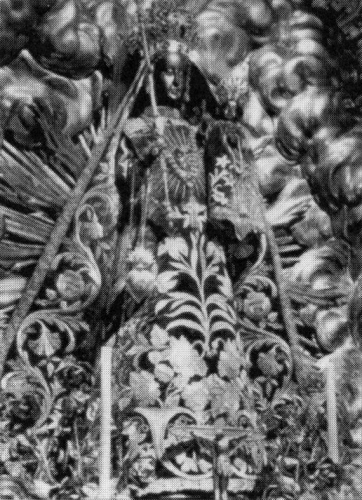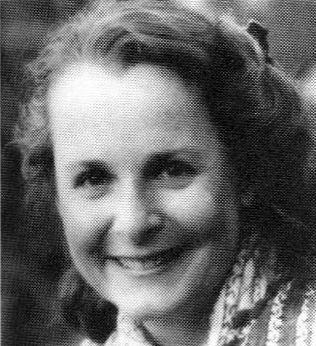The Bond Between Women
A Journey to Fierce Compassion
China Galland
Riverhead Books: New York, 1998
344 pp.; $25.95 (cloth)
 Can ferocity be spiritual? Can anger be a positive force? Can this suffering world be saved, and each of our personal histories simultaneously rescued? In The Bond Between Women, China Galland relates her search for answers to determine if these things are possible. If they are not possible just yet, she’s driven by pain—hers, and the world’s—to make them so.
Can ferocity be spiritual? Can anger be a positive force? Can this suffering world be saved, and each of our personal histories simultaneously rescued? In The Bond Between Women, China Galland relates her search for answers to determine if these things are possible. If they are not possible just yet, she’s driven by pain—hers, and the world’s—to make them so.
This book narrates Galland’s quest to resolve her personal pain and rage and her examination of the outrageous suffering that exists in many parts of the world. Implicitly, the book exhorts each of us to be as brave, to act as forcefully for the good as do the goddesses and real-life heroines Galland presents.
As with most pilgrimages, her questions aren’t clear when she first sets out. She quests through Asia and South America; by the end of the book, she’s dancing in a park in her home town of San Francisco, feeling integrated, no longer struggling. If we wonder at that point what she is planning to do about the world’s pain, we have the book in our hands as an example.
The first way station is Nepal, where we see Galland receiving spiritual teachings from lamas and worrying about rampant child prostitution and AIDS. Here, the main theme of her personal suffering is reflected in global problems of sexual cruelty and ignorance. And she’s very angry about all of it. Galland remembers being raped at the age of four by a family friend, who denies the event. This complex, pervasive trauma drives her to seek resolution as an adult. She connects this story with themes beyond herself: encounters on her journey are woven in with tales of local goddesses, travel observations, and interviews with exceptional women whom she seeks out and adopts into her personal pantheon of allies.
 These are activists, dancers, healers, travelers, and spiritual friends, women who, with the title’s ‘fierce compassion,’ are transforming their surroundings for the better. Most are flesh and blood; but in Galland’s hands, the ones who aren’t mythical goddesses might as well be. It’s a privilege to meet them, even on paper, and we can thank Galland for bringing them to us. There is Sister Jessie, teaching impoverished villagers to read near Bodh Gaya, India; Indramaya, an old Nepali woman who dances and sings, possessed by a goddess; Tara, the deity who long ago vowed always to reincarnate as a woman. The most affecting story is that of Laura Bonaparte, who suffered the loss of seven family members when they were murdered by the military dictatorship in Argentina. Bonaparte now lives as witness to their disappearance; her section of the book brings tears.
These are activists, dancers, healers, travelers, and spiritual friends, women who, with the title’s ‘fierce compassion,’ are transforming their surroundings for the better. Most are flesh and blood; but in Galland’s hands, the ones who aren’t mythical goddesses might as well be. It’s a privilege to meet them, even on paper, and we can thank Galland for bringing them to us. There is Sister Jessie, teaching impoverished villagers to read near Bodh Gaya, India; Indramaya, an old Nepali woman who dances and sings, possessed by a goddess; Tara, the deity who long ago vowed always to reincarnate as a woman. The most affecting story is that of Laura Bonaparte, who suffered the loss of seven family members when they were murdered by the military dictatorship in Argentina. Bonaparte now lives as witness to their disappearance; her section of the book brings tears.
Fiercely honest, Galland opens her eyes to the suffering and injustice in pilgrimage sites such as Bodh Gaya and Kathmandu. After a lama’s teaching, she asks him to account for child abuse. (It’s the kind of question that many students are afraid to ask, since it seems out of keeping with lofty teachings and could easily be taken as obnoxious.) The lama tells her point blank that she must take responsibility for her anger, no matter how justified it seems. This could have been a bitter, humiliating pill for a seeker less uncompromising than Galland, but she swallows the instruction and begins to understand the transformation of personal rage into the fierce, world-saving compassion of certain deities (and certain people.)
Her vulnerability is raw on the page as she writes a letter to her rapist on his deathbed; worries about how her Catholic upbringing might cause her to damage her daughter; congratulates herself for making a minor, brave gesture to a disappointed friend. Readers must be generous through occasional bouts of emotional self-indulgence and clunky writing (the title, for example). Not everyone may resonate with Galland’s intense relationship to myths, nor the idea that a feminine essence exists to be discovered. Still, the various myths come alive as a poetic structure for Galland’s narrative about healing.
By the end of the book, we’re just about convinced that if women would galvanize themselves (ourselves), we (they) could save the world. Surely Galland would agree that the world will be saved soonest if as many men would act, or whenever enough beings make an earnest beginning like Galland and her heroines have done. This book leaves us hoping to elect ourselves as members of this fiery, redemptive band.